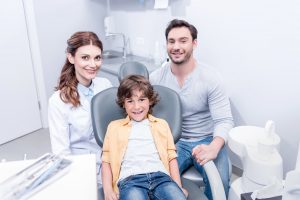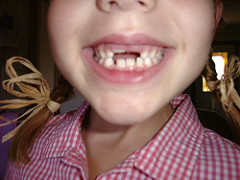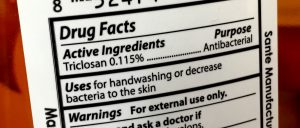J. Peter St. Clair, DMD Blog
SWEET – SUGAR RESEARCH
July 2, 2018
 According to a recent study by British researchers, in order to reduce the significant financial and social burdens of dental decay, free sugars in the diet should make up no more than 3% of total energy intake.
According to a recent study by British researchers, in order to reduce the significant financial and social burdens of dental decay, free sugars in the diet should make up no more than 3% of total energy intake.
Dental decay (caries) is the most common chronic disease worldwide, affecting 60% to 90% of schoolchildren and the majority of adults. In the U.S., 92% of adults ages 20 to 64 have had caries in at least one of their permanent teeth. The treatment of dental diseases costs 5% to 10% of total health expenditure in industrialized countries.
The study findings indicate that current approaches to controlling dental caries are failing to prevent high levels of caries in adults in all countries, according to the researchers. This is related to the current high amount of sugar intake worldwide, and a new and radical policy of progressive sugar reduction is needed. “It is now even more important to develop a radical prevention policy with a marked reduction in sugar intake since the use of fluoride on its own is insufficient to reduce substantially the burden of caries over the lifetime of individuals,” they wrote.
According to World Health Organization (WHO) nutrition guidelines, “free sugars” include “monosaccharides and disaccharides added to foods by the manufacturer, cook, or consumer, and sugars naturally present in honey, syrups, fruit juices, and fruit concentrates.” Sugar consumption should make up only 10% of total energy intake, ideally only 5%, based on WHO guidelines, even with the use of fluoridated water and fluoride toothpaste. That equals about 3 tablespoons (50 grams) of free sugars as the daily maximum, with 2 tablespoons (25 grams) as the target. Research published earlier this year suggests that 5% should be the maximum, with a target of less than 3%.
The researchers recommended radical policy changes to reduce sugar consumption and address the issue of caries. “Our top priority is not to allow the idea of a magic single bullet to solve the problem to be developed,” stated study co-author Philip James, MD, an honorary professor of nutrition at the London School of Hygiene & Tropical Medicine, in the release. “A fundamental aspect of public health planning is to develop society-wide measures which impact the health of the whole community.”
He believes vending machines that sell sugary drinks in areas that are controlled or supported financially by local or central governments should be removed. Publicly supported facilities should not contribute to the expensive problems of dental caries, obesity, and diabetes, Dr. James noted. The food industry should progressively reformulate their products to reduce or remove all sugar from their products, and food labels should label anything containing more than 2.5% sugars as “high,” he recommended.
Dentists, including myself, see far more decay than we should. As I have stated in past columns, dental decay has numerous etiologies but is a very preventable disease.
Dr. St. Clair maintains a private dental practice in Rowley and Newburyport dedicated to health-centered family dentistry. If there are certain topics you would like to see written about or questions you have please email them to him at jpstclair@stclairdmd.com. You can view all previously written columns at www.jpeterstclairdentistry.com/blog.
DENTURE FACTS
June 26, 2018
 Contrary to what many denture-wearers believe, dentures require regular maintenance, including relines, repairs, and replacement. In fact, the average denture should be relined every two to three years and replaced every five to seven years for the most optimal fitting prosthesis. There are many reasons for this maintenance interval and for regular dental examinations, whether or not the patient perceives any problem.
Contrary to what many denture-wearers believe, dentures require regular maintenance, including relines, repairs, and replacement. In fact, the average denture should be relined every two to three years and replaced every five to seven years for the most optimal fitting prosthesis. There are many reasons for this maintenance interval and for regular dental examinations, whether or not the patient perceives any problem.
The first problem has to do with the basic function of the bone surrounding natural teeth. Natural teeth are held in their sockets by thousands of “cables”, called the periodontal ligament that tug and pull on the supporting bone during function. The bone is designed to be strengthened and stimulated in this manner. When the teeth are removed, the bone no longer has appropriate stimulation, and shrinkage occurs unless it is directly loaded again with dental implants. Bone atrophy is accelerated by inappropriate forces caused by loose and ill-fitting dentures.
Relining, or replacing the tissue surface of the denture, helps preserve bone by adapting dentures to the gums as they shrink, but it is only helpful for dentures that are otherwise in good condition, which includes a proper bite relationship. Relining also helps to encourage health of the soft tissues because the denture plastic is porous and becomes heavily laden with bacteria and yeast over time. Relining refreshes the tissue surface of dentures with new acrylic. Sometimes a more advanced type of relining, called rebasing, is the treatment of choice when all of the pink portion of a denture is in poor condition and needs to be replaced.
New dentures should be made when relining or rebasing of dentures can no longer re-establish proper fit and function. Often this is obvious by wear or fracture of the denture teeth. When dentures contribute to headaches or when the patient’s face begins to look “collapsed” or “old”, the need for new dentures is likely.
Lastly, but certainly not of least importance, denture wearers need to stay current with regular dental examinations for inspection of not only the dentures but the tissue for pre-cancerous lesions. Since most people feel they do not need to go to the dentist once they have dentures, many early pre-cancerous lesions are missed.
Everyone is at risk for oral cancer, whether they have teeth or not. In fact, the constant “trauma” and lack of blood circulation caused by chronic denture wear increases the risk for oral cancer development. For this reason alone, annual dental examinations are recommended for denture wearers.
Many patients with older dentures report their dentures fit fine. You can relate this to the fit of shoes. Shoes get broken in over time and seem comfortable. However, the fact is, over time shoes lose their ability to provide proper support. Even though they may be comfortable, they may be causing other problems due to this lack of support.
If you are a denture wearer and have not seen a dentist in a year or more, it’s time to consider a dental visit. Learn about how your dentures are fitting and whether relining or replacing them makes sense. For most, it is also never too late to consider the benefits of dental implants to help preserve bone and secure dentures in place.
Choose the Convenience of a Family Dentist
June 25, 2018
 With the kids out of school, now is the perfect time for your family’s next getaway. As you make hotel reservations and arrange every last detail of the trip, do not forget to schedule an appointment with your dentist before hitting the road. Although it may seem like a hassle, you can save time by choosing a family dentist. With everyone’s needs met under one roof, you will benefit from exceptional care without the run around.
With the kids out of school, now is the perfect time for your family’s next getaway. As you make hotel reservations and arrange every last detail of the trip, do not forget to schedule an appointment with your dentist before hitting the road. Although it may seem like a hassle, you can save time by choosing a family dentist. With everyone’s needs met under one roof, you will benefit from exceptional care without the run around.
(more…)
TIME FOR A NEW APPROACH
June 18, 2018
 Do you have any problems with dental decay (cavities), gum recession, and/or dental erosion (the chemical breakdown of tooth structure)? These dental issues are complicated multifactorial diseases of epidemic levels affecting both children and adults. A healthy mouth sometimes requires more than brushing, flossing, and “fillings”. With current scientific evidence and new technologies, patients and practitioners need to begin to look at these problems not just from a drilling and filling approach, but also from a medical (preventive/therapeutic) approach.
Do you have any problems with dental decay (cavities), gum recession, and/or dental erosion (the chemical breakdown of tooth structure)? These dental issues are complicated multifactorial diseases of epidemic levels affecting both children and adults. A healthy mouth sometimes requires more than brushing, flossing, and “fillings”. With current scientific evidence and new technologies, patients and practitioners need to begin to look at these problems not just from a drilling and filling approach, but also from a medical (preventive/therapeutic) approach.
There are over 19,000 different bacteria that have been found in mouths and every person has about 1,000 different types. Not all of them cause decay, but many of them have also been found to grow on artery walls. The medical/dental systemic connection is real and we must pay more attention to it.
Why the increase in decay? Most of it has to do with dietary trends. We snack more, eat more sugar/carbs, drink more soda, have more gastric reflux, take more mouth-drying medications, etc. Dental caries (decay) is a pH specific disease. The right bacteria, plus sugar, create acid which breaks down the enamel of the teeth. Add an already acidic environment and it is even worse. In most cases it is a preventable disease. And don’t think that just because you don’t eat “sugar” that you are safe. If you are getting decay, something is causing it. The problem is that changing behavior can be very hard to do.
It is time for the dental professional to take a different approach when treating this disease. More focus needs to be shifted to prevention of decay rather just treating it. Filling teeth is treating the result of the disease but does nothing to prevent it. The dentist needs to take a more active role in assessing individual’s risk factors. In the dental world this is referred to as CAMBRA, which stands for Caries Management By Risk Assessment.
Based on assessing an individual’s risk factors such as quality of home care, quality of salivary flow, medication issues, and dietary issues, a caries-preventive strategy can be established. There are many new products on the horizon to help combat and virtually eliminate this disease. However, dentists must take some responsibility and be open to a different management of this disease. They must also be able to motivate people to change habits, which can be challenging. The bottom line is that if you want to be decay-free, you can be.
For those at higher risk, there are some great products currently available from a company called Carifree. Everything from new toothpastes and gels with ions in them to rebuild tooth structure, sprays to neutralize pH, and probiotics are on their way. Right now you can use things like the sweetener replacement Xylitol, which by itself is cavity-fighting, but also works synergistically with fluoride. Prescription level toothpastes are also available and there is strong research for the topical application of fluoride varnish, the same stuff the kids get, for adults.
The evidence is very clear – this is a preventable disease. Next time you go to the dentist and find out you have a new cavity, stop blaming the dentist or yourself, and ask to get a specific protocol for prevention of this disease based on your specific risk factors. You may also want to mention Carifree products to your dentist in case they have not heard of this company.
Dr. St. Clair maintains a private dental practice in Rowley and Newburyport dedicated to health-centered family dentistry. If there are certain topics you would like to see written about or questions you have please email them to him at jpstclair@stclairdmd.com. You can view all previously written columns at www.jpeterstclairdentistry.com/blog.
THE SAME BUT DIFFERENT
June 11, 2018
 If all dental offices do the same thing – treat teeth – why are there so many variables between different offices?
If all dental offices do the same thing – treat teeth – why are there so many variables between different offices?
Each office takes on the characteristics of the practitioner who owns it. The personality of the owner is probably the key to how that office “feels” when you walk in the door. Some practices may feel “clinical and efficient”, while others feel somewhat more home spun and laid back. The dentist’s personality is reflected in his or her treatment preferences as well. The fact that different dentists will suggest different plans to treat your condition does not necessarily mean that one plan is better than another.
Most dentists will suggest what they feel to be the best plan for any given patient. The differences between the treatment suggested by one dentist over another reflects that dentist’s preferences based on his or her experience. Thus, differing treatment plans do not necessarily reflect any deficiency in either dentist’s judgment.
All dentists who have graduated from an accredited dental school should be technically competent to perform any procedure that they personally feel comfortable performing. But it is important to remember that each one is an individual, and no two dentists can perform exactly the same technical procedure in exactly the same way. As a matter of fact, no single dentist can perform exactly the same procedure exactly the same way twice in a row! How well your filling turns out depends as much on how wide you can open your mouth as it does on the technical qualifications and skills of the dentist himself or herself.
There is also no dentist who can perform all procedures for every patient at their highest level. While many patients like a one-stop-shop for their dental needs, it is sometimes in the best interest of the patient to be treated by a specialist for a particular problem. The dentist and patient should discuss this, especially for more complex issues.
It is also important to remember that there are numerous ways to treat the same situation. The dentist needs to tailor treatment plans for each patient’s specific circumstances. For example, finances are one of those circumstances, and since different treatment plans can vary a great deal in cost, it is important for the dentist to be able to discuss finances. The best treatment plan for any patient is one that meets the needs of the patient from a clinical perspective, and that they are aware of and comfortable with financially.
Think of treatment plans like various models of cars offered by different dealers. All of the models are new, have warranties and will work well out of the lot. The higher end models, however, have some advantages not found in the less expensive models. Some options add years to the life of the car. Some add to the appearance and enjoyment of driving it. Dental treatment plans are like that too. Saving a badly damaged tooth with a root canal and a crown will most likely preserve it for a long time, but it has a price attached to it. The patient may opt for a much less expensive extraction instead. A dentist should be able to explain the advantages and disadvantages of the various options, and allow the patient to make the decision.
Over the years I have developed great respect for all members of the dental office team. There is no greater reward than to be part of a profession that seeks to improve people’s lives.
Dr. St. Clair maintains a private dental practice in Rowley and Newburyport dedicated to health-centered family dentistry. If there are certain topics you would like to see written about or questions you have please email them to him at jpstclair@stclairdmd.com. You can view all previously written columns at www.jpeterstclairdentistry.com/blog.
THE DIABETIC EPIDEMIC
June 4, 2018
 With more than 24 million diabetics and 57 million pre-diabetics in the United States, nearly a quarter of the nation’s population, there are a lot of people affected by diabetes. The prevalence of diabetes will increase by 54% to more than 54.9 million Americans between 2015 and 2030; annual deaths attributed to diabetes will climb by 38% to 385,800. In addition, the most up to date research shows the connection between dental health and diabetes has never been more critical.
With more than 24 million diabetics and 57 million pre-diabetics in the United States, nearly a quarter of the nation’s population, there are a lot of people affected by diabetes. The prevalence of diabetes will increase by 54% to more than 54.9 million Americans between 2015 and 2030; annual deaths attributed to diabetes will climb by 38% to 385,800. In addition, the most up to date research shows the connection between dental health and diabetes has never been more critical.
As an indication of our general health, the rapidly rising rate of diabetes should be ringing alarm bells everywhere. The litany of health implications from diabetes is a long and grisly list. It is the sixth leading cause of death in the U.S. That is probably vastly understated because as many as 65% of deaths from diabetes are attributed to heart attack and stroke. People with diabetes have about twice the overall risk of death as those who don’t have the disease.
Complications from diabetes cuts years off productive lives and interfere with the quality of those lives through a host of debilitating health effects. Heart disease and stroke rates are as much as four times higher among diabetics. Nearly three-quarters of diabetics have high blood pressure. Each year, diabetes causes blindness in as many as 24,000 Americans. It is the leading cause of kidney failure, nervous system disease, amputations – the list goes on.
This isn’t meant to be a scare tactic. These are simply the facts and, yes, they are sobering. But if you have diabetes or are pre-diabetic, you may want to brace yourself. Because we are going to talk straight about oral health and diabetes, two diseases that can twist each other into a tight downward spiral of amplifying negative health effects. Unless they are halted by your physician and your dentist working in tandem as a health care team, together with your commitment to hold up your end of the bargain, these effects can continue to compound.
The facts about the connections between oral health and diabetes are even more alarming than those about diabetes alone. Here are just a few:
Diabetics are twice as likely to develop gum disease. This is especially true if your diabetes is not under control. The gum disease then worsens your diabetes through an automatic response that your body uses to fight the infection.
People with gum disease are 270% more likely to suffer a heart attack than those with healthy gums.
People who have diabetes and severe gum disease have a premature death rate nearly eight times higher than those who do not have periodontal disease.
Those who have gum disease and diabetes together are more than three times more likely to die of combined heart and kidney failure.
In people who have type 2 diabetes, gum disease is a predictor of end-stage kidney disease.
In people who have pre-diabetes – blood glucose levels that are higher than normal but not in the diabetic range – gum disease makes it more likely that they will become diabetic.
Once established in a person who has diabetes, the chronic infection that causes gum disease makes it more difficult to control diabetes, and increases damage and complications in blood vessel disease.
Aggressive population health measures, including increased availability of diabetes prevention programs, could help millions of adults prevent or delay the progression to type 2 diabetes, thereby helping turn around these dire projections.
What Can I Do About My Sensitive Teeth? Your Dentist Has Answers!
May 22, 2018
 It’s a mild spring day and you’re out with your family enjoying a delicious serving of ice cream, when all of a sudden, you feel a twinge of discomfort in your front teeth from your cold dessert. You wonder, “Why did this happen – Do I have to avoid ice cream from now on?” Your local dentist says that there are ways to address your sensitive teeth, so that you can once again enjoy life. Learn about them as you read on!
It’s a mild spring day and you’re out with your family enjoying a delicious serving of ice cream, when all of a sudden, you feel a twinge of discomfort in your front teeth from your cold dessert. You wonder, “Why did this happen – Do I have to avoid ice cream from now on?” Your local dentist says that there are ways to address your sensitive teeth, so that you can once again enjoy life. Learn about them as you read on!
INTERESTING STUDY
May 21, 2018
 A Harvard-led study published in the journal, Science Translational Medicine, has determined that the use of low-powered lasers can stimulate stem cells enough to regenerate and grow rat teeth and human dental tissue. This concept may seem barbaric, but it could be a metamorphic tool in the constantly evolving world of dentistry.
A Harvard-led study published in the journal, Science Translational Medicine, has determined that the use of low-powered lasers can stimulate stem cells enough to regenerate and grow rat teeth and human dental tissue. This concept may seem barbaric, but it could be a metamorphic tool in the constantly evolving world of dentistry.
Researchers have been trying to figure out new ways to use the versatility of stem cells since they exist in abundance throughout the human body. Stem cells are unique in the sense that they can become different types of cells, making them prime candidates to repair or replace damaged tissue.
Although the research is still in its earliest stages and has yet to be tested on humans, using lasers to stimulate growth is not a new concept – but this study marks the first time that this process has been demonstrated and observed. The findings in this study could potentially change the future of dentistry since it could be possible to regrow teeth rather than replacing them with another material.
The experiment involved drilling holes in rat molars to expose the dentin (the layer of tooth under enamel); one molar was treated with a laser while the other molars went untreated. After 12 weeks, the researchers noticed that the dentin was growing back in the treated molar. After this finding, all of the rat molars were treated with lasers and yielded the same results.
This technique was also tested on various mammal cells and the researchers observed that certain oxygen-containing molecules were stimulated and caused the stem cells to convert into dentin as well. When this technique was tested on human dental stem cells, the results were also similar.
Although this is groundbreaking research, don’t expect to see this technique offered by your dentist to fix your cavities or replace your missing teeth any time soon. Even though the teeth grew back in the rats, the teeth did not grow back perfectly each time. Early studies like these are exciting but take years to even determine how they will apply to clinical practice in humans.
There is a light at the end of the tunnel. Since human teeth are larger than rat teeth, researchers hypothesize that it could be possible to pinpoint certain growth areas without causing the problems they have seen in the formation of the tooth material in rats. The researchers are currently developing human trials for this technique to see what the laser and stem cell combination have in store for the future of dentistry.
The best dentistry is always not to need any dentistry. Regular maintenance appointments with your favorite dental office are the best way to keep on top of that. Although there is cool research going on for the prevention and solution of common dental problems, most dental problems are completely avoidable with proper care.
TRICLOSAN
May 14, 2018
 One of my great patients, Malcolm, recently sent me an article he received from his Alma Mater entitled “Risky Bristles”. Malcom wanted me to share some information with you about triclosan.
One of my great patients, Malcolm, recently sent me an article he received from his Alma Mater entitled “Risky Bristles”. Malcom wanted me to share some information with you about triclosan.
According to the Environmental Protection Agency, triclosan is an antimicrobial agent that helps to “slow or stop the growth of bacteria, fungi, and mildew.” It first started to appear in antibacterial hand soap products in the 1970’s.
Since then, according to the Center for Disease Control, “it has been used in consumer products such as detergents, soaps, skin cleansers, deodorants, lotions, creams, toothpastes, and dishwashing liquids.” Many products labeled as “antibacterial” may contain triclosan or related compounds.
One of those products that contains triclosan is Colgate Total toothpaste. The reason the triclosan is in the toothpaste is to fight gingivitis, a common disease that causes inflammation and bleeding gums. Last year, an independent review of triclosan in toothpaste concluded that the chemical “reduced plaque, gingival inflammation, and gingival bleeding” but that those reductions “may or may not be clinically important.”
So, what’s the problem? While long-term research is lacking in humans, several studies of the effects of triclosan in mice and rats have found adverse health effects at high concentrations. Included in these findings were reduced fertility and increased cancer risk. It is important to note that chemicals can affect animals differently from humans. Animal testing can involve much higher concentrations of tested chemicals than humans would ever be exposed to. However, these kinds of findings in animals definitely raise eyebrows as to whether chemicals like triclosan are safe for human use.
According to the Center for Disease Control, “the human health effects from exposure to low environmental levels of triclosan are unknown. More research is needed to assess the human effects of exposure to triclosan.”
In December 2017, the FDA issued a final rule regarding certain OTC health-care antiseptic products. As a result, companies will not be able to use triclosan or 23 other active ingredients in these products without premarket review due to insufficient data regarding their safety and effectiveness. However, in 1997, the FDA reviewed extensive effectiveness data on triclosan in Colgate Total toothpaste. The evidence showed that triclosan in that product was effective in preventing gingivitis, so I believe this is still present in this toothpaste.
Triclosan has been phased-out of many soap products because of mounting evidence that these products don’t provide any health benefits above regular soap and water.
Certain environmental groups raised concerns over a decade ago that triclosan in soaps might be contributing to the rise in antibiotic resistant bacteria, which can cause dangerous infections that are hard to treat. These groups are also concerned that because the chemical gets washed down the drain, it may disrupt algae and wildlife found in water ecosystems.
So, should you throw away your toothpaste if it contains triclosan? That is up to you. My opinion is that there are plenty of other products and methods, without the inclusion of triclosan, that reduce the risk of gingivitis. Proper home care with any toothpaste in addition to regular dental visits, are sufficient to control gingivitis in most people.
Dr. St. Clair maintains a private dental practice in Rowley and Newburyport dedicated to health-centered family dentistry. If there are certain topics you would like to see written about or questions you have please email them to him at jpstclair@stclairdmd.com. You can view all previously written columns at www.jpeterstclairdentistry.com/blog.
REPLACEMENT PARTS
May 7, 2018
 It seems I have more and more patients telling me about their upcoming shoulder, hip, and knee replacement surgery. There are other parts that people have replaced, but those are the top three. Most of these people decide to go under the knife to improve their quality of life.
It seems I have more and more patients telling me about their upcoming shoulder, hip, and knee replacement surgery. There are other parts that people have replaced, but those are the top three. Most of these people decide to go under the knife to improve their quality of life.
If you were born in the Paleolithic era, you could expect to live to 33 years old. The average global life expectancy in 2010 was more than double this number at 67 years. The main reasons for this are advances in hygiene, food production, and medical care.
On the bright side, if you were born in the Paleolithic era, you would most likely never need a hip replacement. It usually takes longer than 33 years to wear out the joint.
Today, about 2.3% of Americans have had a hip replaced and 4.6% have had a knee replaced. More than a million joint replacements will be done this year and the number continues to grow. The longer we live, the more chance we have of parts needing replacement.
What about teeth? Your lower first permanent molars erupted into your mouth around the age of 6 years old. If you are 50 years old, these teeth have been tolerating chewing, hot coffee, cold ice cream, the occasional popcorn kernel, and maybe even grinding back and forth for 44 years. You have used them every day for 44 years!
What else can you use that much for 44 years that doesn’t require some kind of maintenance? How about that car you drive every day? The car certainly requires maintenance to function properly. The oil needs to be changed on a regular basis. Depending on several factors, the tires need to be rotated to wear evenly and usually need to be replaced after so many miles. I don’t know too many people who drive the same car for 44 years.
Of course, I am not insinuating that everyone needs replacement teeth at some point. I am saying that it is naïve to think that a car, a furnace, a computer or your teeth will run forever without maintenance, and that they will run better with routine maintenance.
What happens if you don’t do regular maintenance on your car? It will run for a long time, at some point its performance will decrease, and then when it finally decides to quit, it will be catastrophic. You will have to replace your car. How much will it cost to replace your car? Doesn’t it make sense to keep up with the routine maintenance?
Sometimes, even with regular maintenance, parts need to be repaired or replaced. We often have to make a decision on “how” to fix something. Do we patch it up to get some more miles out of it or do we replace the part to extend the serviceability? It may depend on the cost. It may also depend on the risk of the patch failing. You may decide that the risk is too high and go ahead and replace the part, even though it may cost more.
If you were a caveman, we wouldn’t be discussing this. You wouldn’t have a car and most of your own “parts” would make it to your expected 33 years. You are not a caveman. You are likely to wear parts out. You may need a hip replacement, or a filling, or a crown.
And remember: Regular oil changes and maintenance will help your car run well much longer.







